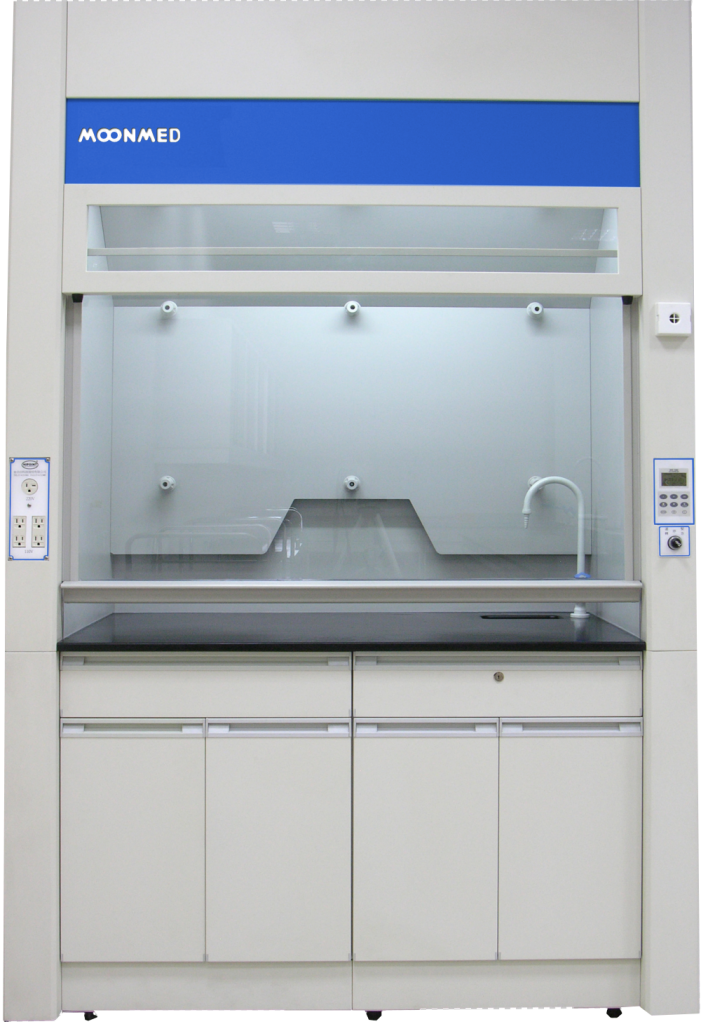Toxic substances and their fumes can be hazardous to our health. Chemicals can be toxic, harming us when they enter the body. Exposure to a toxic substance can cause burns, vomiting, diarrhea, drowsiness and even death in some instances. Some chemicals can even explode.
Every laboratory needs a fume hood because breathing in dust, mist and vapors can be deposited in the airways and be absorbed by the lungs into the bloodstream where they are carried to the rest of the body. Laboratory fume hoods control exposure to toxic vapors and gases, and are the primary method of exposure control in the laboratory.
 These exhaust ventilation systems have a cabinet with a front window made out of safety glass. The window, known as a sash, prevents injury from splashes and even small explosions that happen inside the hood. A fume hood exhausts hazardous gases, dusts and vapors from a certain area, protecting lab workers from inhaling the fumes. They make use of occupancy sensors which detect when a user is no longer at the hood, and auto sash operators then close the fume hood sash. This system is called a VAV system.
These exhaust ventilation systems have a cabinet with a front window made out of safety glass. The window, known as a sash, prevents injury from splashes and even small explosions that happen inside the hood. A fume hood exhausts hazardous gases, dusts and vapors from a certain area, protecting lab workers from inhaling the fumes. They make use of occupancy sensors which detect when a user is no longer at the hood, and auto sash operators then close the fume hood sash. This system is called a VAV system.
Inadequate Flow Rates with Improper Use
Fume hoods in a laboratory setting come with control- panels and are not just a side-item to make life more comfortable in the laboratory environment. There are risks with the improper use of fume hoods, which are classified as safety equipment. With improper use and maintenance the fume hood won’t provide adequate flow rates.
As with all laboratory appliances and equipment, you get different types of the same thing. Let’s look at a few of the different types of fume hoods you get –
● Distillation Fume Hood
● Ducted and Ductless Fume Hood
● Acid Digestion Fume Hood
● Radioisotope Fume Hood
● Perchloric Acid Fume Hood
The principle with fume hoods remains basically the same. Air is drawn in from the front side of the cabinet and then expelled outside the laboratory. It can also be filtered and re-enter the room in a safe state.
You’ll mostly find these hoods against walls and they are available in different widths, from 1000mm up to 2000mm with its height varying between 1900mm and 2700mm. Most fume hoods come with internal lights with vapor proof covers, and for working with particularly hazardous materials, there’ll be an enclose glovebox.
Working towards Energy Efficient Lab
Fume hoods remove large volumes of conditioned air from lab spaces which in turn means they consume large amounts of energy. The bulk of the energy these fume hoods are responsible for is the energy needed to heat or cool air into the lab (air-conditioning). Depending on the system installed, this energy can be electricity, natural gas or other energy types. The fume hoods are a major factor in making laboratories far more energy intensive compared to standard commercial buildings. Programmes are in place for laboratory workers to reduce energy consumption by keeping variable air volume sashes closed as much as possible and using Fume Hoods with an energy saving VAV system.
The fume hood is an important safety feature in the laboratory and when selected properly can actually result in energy savings for the laboratory.



